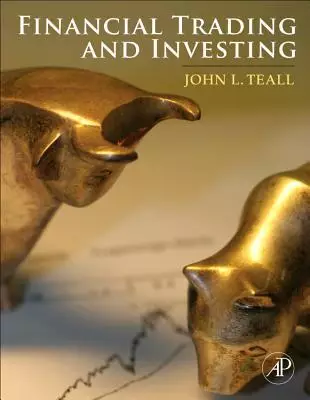
CHAPTER 1
Introduction to Securities Trading
and Markets
1.1 TRADES, TRADERS, SECURITIES, AND MARKETS
A trade is a security transaction that creates or alters a portfolio position based on an
investment decision. The trade action and the trade decision follow the investing decision
to buy, sell, or otherwise take a position in an asset or instrument. The trade decision concerns how to execute the investment decision, in which markets, at what prices and times
and through which agents. Trade decisions are more concerned with the speed, costs, and
risks associated with executing the transaction, while investing emphasizes selection of the
security. The investment strategy is linked to the rationale to buy or to sell (e.g., to exploit
undervaluation). Investing is a positive sum game, allocating capital towards production
and risk management. Trading is often a zero sum game, except to the extent that it facilitates investing, produces information, and improves markets by enhancing liquidity
(ease of buying and selling securities) and reducing execution costs. While investing and
trading activities might be distinguished from one another, there is a significant overlap
between them, where high-turnover short-term investing, also referred to as trading, blurs
the distinction between the two.
Traders compete to generate profits, seeking compatible counterparties in trade and
seeking superior order placement and timing. Proprietary traders seek profits by trading on
their own accounts while agency traders trade as commission brokers on behalf of clients.
Most proprietary traders are speculators who focus on profits derived from price changes,
arbitrageurs who focus on price discrepancies, and hedgers who seek to control risk. Dealers,
who trade directly with clients, and brokers, who seek trade counterparties for clients, facil-
itate the trading process. Brokers act as agents for investors, buying and selling for them
on a commission or mark-up basis. Dealers maintain quotes (bids, which are solicitations to
purchase and offers, which are solicitations to sell) and buy and sell on a profit basis. The
typical quote specifies the security, the proposed transaction’s price, and the number of
units to be exchanged at this price. The spread is simply the difference between the best
offer and best bid. Buy side traders such as individual investors, mutual funds, and pension
funds buy exchange or liquidity services. This means that buy side traders make invest-
ment decisions to take positions in securities and seek counterparties to buy from or sell
to. Sell side traders such as day traders, market makers, and brokers provide liquidity and
markets to buy side traders. Sell side traders stand by awaiting orders from buy side tra-
ders. One should not confuse buy side and sell side traders with buyers and sellers of
securities; buy-side traders buy liquidity services and sell-side traders sell liquidity ser-
vices. Regulatory definitions for traders will be discussed shortly.
Trading Illustration
Consider a hypothetical scenario where an equities analyst working for the Flagellan
Fund has recommended that the fund purchase shares of the General Engine Company. The
fund’s portfolio manager agreed, and placed an order for 50,000 shares with the fund’s in-
house trader. The in-house trader decided to transact 10,000 shares herself, and placed buy
orders of 20,000 shares each with two brokers, Kanteven-Fitzgerald and Themus Trading.
Counterparties for the trades will be found in various trading venues, including exchanges
and alternative trading systems. Flagellan is considered a buy side market participant, not
because it is buying shares, but because it is buying liquidity. Its counterparties in trade will
probably be a combination of buy side and sell side market participants.
Securities and Instruments
The term “security” has several alternative definitions. In this text, we generally define
a security to be a tradable claim on the assets of an institution or individual. Where real
assets contribute to the productive capacity of the economy, securities are financial assets
that merely represent claims on real assets. Many securities represent ownership (e.g.,
shares of stock) or creditorship (e.g., bond) of an institution (e.g., corporation). Some
instruments will represent obligations to buy or sell (e.g., futures contracts) or options to
buy or sell. Most corporate securities imply either fixed claims (such as bonds that typi-
cally involve fixed interest and principal repayments) or residual claims (such as common
stock, whose owners receive assets remaining after creditors’ and other claims have been
satisfied). Most securities are marketable to the general public, meaning that they can be
sold or assigned to other investors in the open marketplace.
In a 1946 decision (SEC v. Howey Co., 328 U.S. 293), the U.S. Supreme Court defined a
security to be an investment contract based on the following four criteria, which are collec-
tively referred to as the Howey Test:
1. The involvement of an investment of money or other valued assets.
2. The formation of and investment into a common enterprise.
3. An expectation of profits from this investment.
4. The use of a third party to promote the offering.
Some of the more common types of securities and tradable instruments are classified
and briefly introduced in the following:




